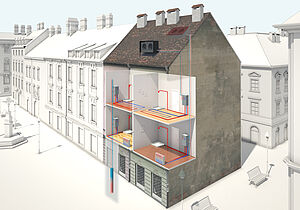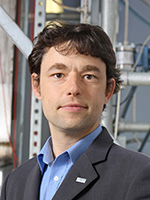Across Austria, there are still around 800,000 gas-fired heating systems - especially in the cities. On the road to climate neutrality, converting these residential and office units to climate-friendly heating systems is perhaps the greatest challenge. To find a solution, Ochsner Heat Pumps and AIT - Austrian Institute of Technology are working on a joint project to develop a modular heat pump with environmentally friendly refrigerant to replace gas boilers in large-volume residential buildings.
Heat pumps are now the dominant heating technology in new buildings. The heat pump provides far more thermal energy than the electrical energy that has to be supplied. The annual performance factor of modern heat pumps is 3 to 4, which means an energy efficiency of 300 % to 400 % of the renewable electricity used. In evaluating various options for replacing fossil gas as an energy source, a report by the Austrian Forum Wissenschaft & Umwelt therefore concludes that heat pumps are the best technical option for phasing out natural gas.
Currently, however, there are hardly any opportunities for individual households in large-volume housing to switch to heat pumps, so the gradual renovation of multi-apartment buildings with heat pumps is only at the beginning of its success story.
Ochsner Wärmepumpen and AIT - Austrian Institute of Technology are working in a joint project on the development of cost-effective, modular heat pumps with environmentally friendly refrigerant. The result of the project is decentralized, sound-optimized heat pumps for heating, cooling and hot water, which, thanks to their compact dimensions, are ideally suited to replace gas boilers in large-volume residential buildings. During operation, a heat storage tank and the development of the heat source are still required. The heat source is optimally shared by all heat pumps in the building, either using the outside air or geothermal heat. The piping can be routed through the now unused chimney. The modular approach allows easy adaptation to any apartment size and gradual replacement per apartment, without affecting the remaining residential units.
The "smart" communication of the installed components allows the efficient use of existing heat and waste heat potentials. For example, the waste heat generated during cooling is used to heat water in summer.
![[Translate to English:] Digitalisation and HVAC Technologies Symbolfoto: Das AIT ist Österreichs größte außeruniversitäre Forschungseinrichtung](/fileadmin/_processed_/8/1/csm_GettyImages-18655_5a3dffca27.jpg)



